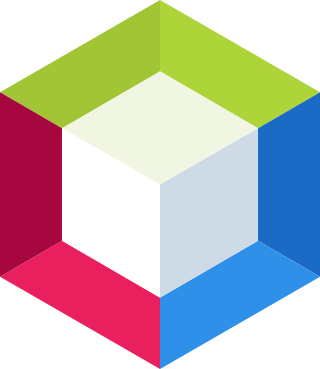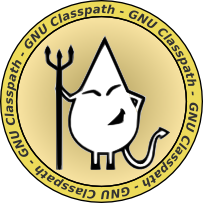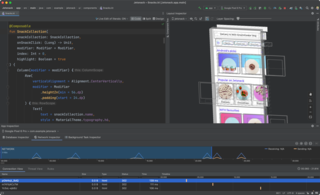
Java is a high-level, class-based, object-oriented programming language that is designed to have as few implementation dependencies as possible. It is a general-purpose programming language intended to let programmers write once, run anywhere (WORA), meaning that compiled Java code can run on all platforms that support Java without the need to recompile. Java applications are typically compiled to bytecode that can run on any Java virtual machine (JVM) regardless of the underlying computer architecture. The syntax of Java is similar to C and C++, but has fewer low-level facilities than either of them. The Java runtime provides dynamic capabilities that are typically not available in traditional compiled languages. As of 2019, Java was one of the most popular programming languages in use according to GitHub, particularly for client–server web applications, with a reported 9 million developers.

A Java virtual machine (JVM) is a virtual machine that enables a computer to run Java programs as well as programs written in other languages that are also compiled to Java bytecode. The JVM is detailed by a specification that formally describes what is required in a JVM implementation. Having a specification ensures interoperability of Java programs across different implementations so that program authors using the Java Development Kit (JDK) need not worry about idiosyncrasies of the underlying hardware platform.
Java Platform, Standard Edition is a computing platform for development and deployment of portable code for desktop and server environments. Java SE was formerly known as Java 2 Platform, Standard Edition (J2SE).

NetBeans is an integrated development environment (IDE) for Java. NetBeans allows applications to be developed from a set of modular software components called modules. NetBeans runs on Windows, macOS, Linux and Solaris. In addition to Java development, it has extensions for other languages like PHP, C, C++, HTML5, and JavaScript. Applications based on NetBeans, including the NetBeans IDE, can be extended by third party developers.
AspectJ is an aspect-oriented programming (AOP) extension created at PARC for the Java programming language. It is available in Eclipse Foundation open-source projects, both stand-alone and integrated into Eclipse. AspectJ has become a widely used de facto standard for AOP by emphasizing simplicity and usability for end users. It uses Java-like syntax, and included IDE integrations for displaying crosscutting structure since its initial public release in 2001.

GNU Classpath is a free software implementation of the standard class library for the Java programming language. Most classes from J2SE 1.4 and 5.0 are implemented. Classpath can thus be used to run Java-based applications. GNU Classpath is a part of the GNU Project. It was originally developed in parallel with libgcj due to license incompatibilities, but later the two projects merged.
The Connected Device Configuration (CDC) is a specification of a framework for Java ME applications describing the basic set of libraries and virtual-machine features that must be present in an implementation. The CDC is combined with one or more profiles to give developers a platform for building applications on embedded devices ranging from pagers up to set-top boxes. The CDC was developed under the Java Community Process as JSR 36 and JSR 218.
The Connected Limited Device Configuration (CLDC) is a specification of a framework for Java ME applications describing the basic set of libraries and virtual-machine features that must be present in an implementation. The CLDC is combined with one or more profiles to give developers a platform for building applications on embedded devices with very limited resources such as pagers and mobile phones. The CLDC was developed under the Java Community Process as JSR 30 and JSR 139.
Visual J++ is Microsoft's discontinued implementation of Java. Syntax, keywords, and grammatical conventions were the same as Java's. It was introduced in 1996 and discontinued in January 2004, replaced to a certain extent by J# and C#.

Apache Tapestry is an open-source component-oriented Java web application framework conceptually similar to JavaServer Faces and Apache Wicket. Tapestry was created by Howard Lewis Ship, and was adopted by the Apache Software Foundation as a top-level project in 2006.
Java Card is a software technology that allows Java-based applications (applets) to be run securely on smart cards and more generally on similar secure small memory footprint devices which are called “secure elements” (SE). Today, a Secure Element is not limited to its smart cards and other removable cryptographic tokens form factors; embedded SEs soldered onto a device board and new security designs embedded into general purpose chips are also widely used. Java Card addresses this hardware fragmentation and specificities while retaining code portability brought forward by Java.

Java is a set of computer software and specifications developed by James Gosling at Sun Microsystems, which was later acquired by the Oracle Corporation, that provides a system for developing application software and deploying it in a cross-platform computing environment. Java is used in a wide variety of computing platforms from embedded devices and mobile phones to enterprise servers and supercomputers. Java applets, which are less common than standalone Java applications, were commonly run in secure, sandboxed environments to provide many features of native applications through being embedded in HTML pages.
The Spring Framework is an application framework and inversion of control container for the Java platform. The framework's core features can be used by any Java application, but there are extensions for building web applications on top of the Java EE platform. Although the framework does not impose any specific programming model, it has become popular in the Java community as an addition to the Enterprise JavaBeans (EJB) model. The Spring Framework is open source.
The Java language has undergone several changes since JDK 1.0 as well as numerous additions of classes and packages to the standard library. Since J2SE 1.4, the evolution of the Java language has been governed by the Java Community Process (JCP), which uses Java Specification Requests (JSRs) to propose and specify additions and changes to the Java platform. The language is specified by the Java Language Specification (JLS); changes to the JLS are managed under JSR 901. In September 2017, Mark Reinhold, chief Architect of the Java Platform, proposed to change the release train to "one feature release every six months" rather than the then-current two-year schedule. This proposal took effect for all following versions, and is still the current release schedule.
Jakarta Persistence is a Jakarta EE application programming interface specification that describes the management of relational data in enterprise Java applications.
Dalvik is a discontinued process virtual machine (VM) in the Android operating system that executes applications written for Android. Dalvik was an integral part of the Android software stack in the Android versions 4.4 "KitKat" and earlier, which were commonly used on mobile devices such as mobile phones and tablet computers, and more in some devices such as smart TVs and wearables. Dalvik is open-source software, originally written by Dan Bornstein, who named it after the fishing village of Dalvík in Eyjafjörður, Iceland.
Java backporting tools are programs that convert Java classes bytecodes from one version of the Java Platform to an older one.
This article compares the application programming interfaces (APIs) and virtual machines (VMs) of the programming language Java and operating system Android.
In computing, Java bytecode is the bytecode-structured instruction set of the Java virtual machine (JVM), a virtual machine that enables a computer to run programs written in the Java programming language and several other programming languages, see List of JVM languages.

Android Studio is the official integrated development environment (IDE) for Google's Android operating system, built on JetBrains' IntelliJ IDEA software and designed specifically for Android development. It is available for download on Windows, macOS and Linux based operating systems. It is a replacement for the Eclipse Android Development Tools (E-ADT) as the primary IDE for native Android application development.